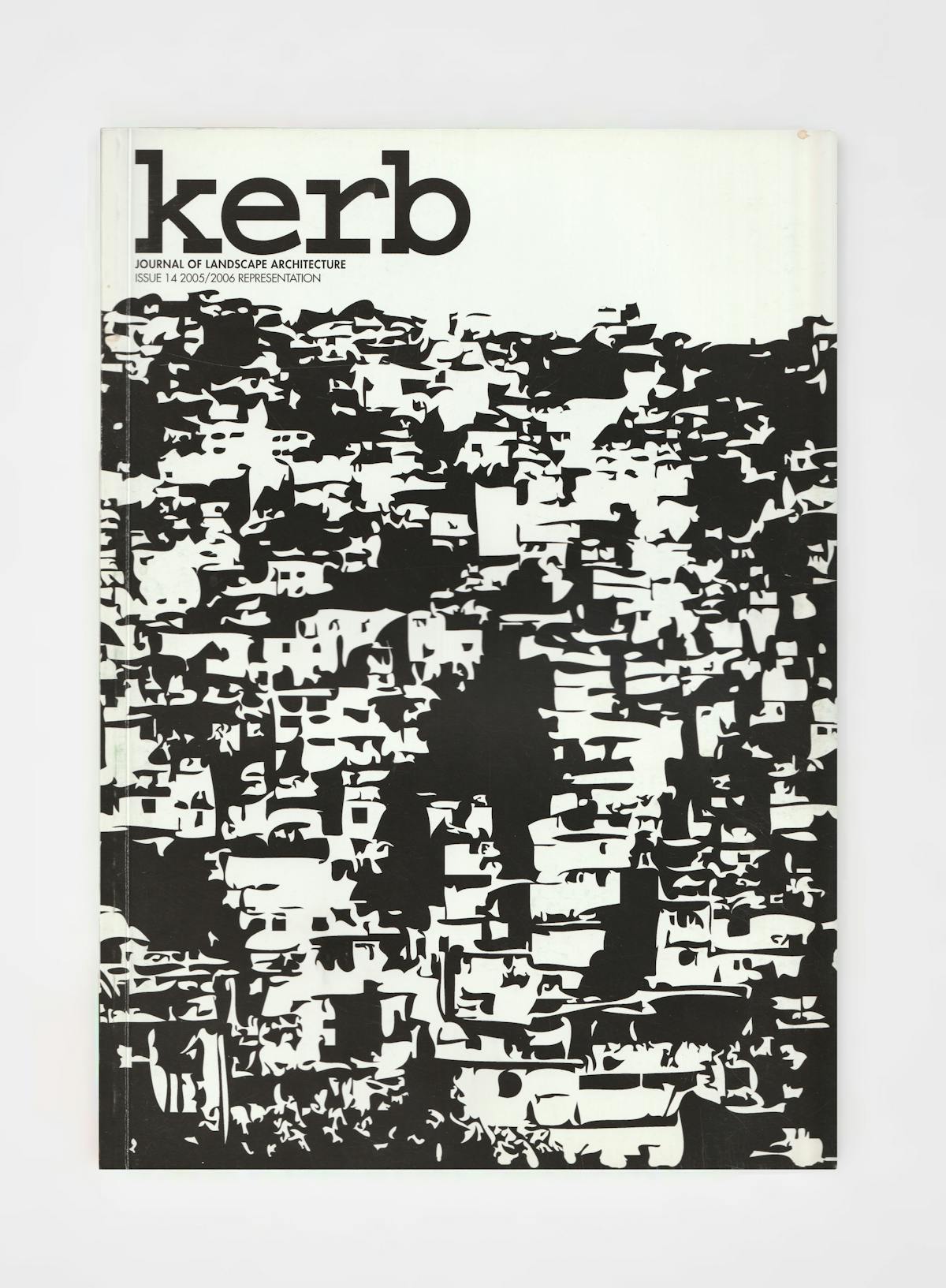Ten years ago there was an issue of Kerb loosely about representation. The first editition of Kerb was significant in the early 1990s since computers were gaining wide use and there was a push to utilise digital mediums in the discourse of landscape architecture. Inside the lime green and black cover, clunky CAD drawings and terms such as virtual reality and cyberspace were examined. This was very innovative in its time.
The computer has certainly provided a new level of precision and sophistication for landscape architects. Programs such as AutoCAD, Rhino and Photoshop have allowed us to zoom in and out of terrains, play with three-dimensional aspects of landform and make quick modifications to surfaces. Whilst conventional sections, plans and collages had never looked more seductive, we at Kerb wanted to know if design was better as a result of these emerging representations. If not, is it because we were becoming more engaged with representations than the issues of the real world?
Representation is a concern for landscape architects. Although designers use drawing as a medium to examine a site, communicate ideas or articulate what is not built, it is important to acknowledge representational constructs are secondary to the experience. To be too fixated with a simulation is to be removed from the actual conditions of a landscape situation. However, dismissing the use of representation limits the ability to tease out what is important or unique about a site. Landscapes are often complex places; underestimating them spells misjudgment and encourages mediocre projects.
Kerb 14 sets out to understand the value, role and possibilities of representation in landscape architecture. These articles attempt to provoke new ways of seeing place by exploiting the methods which make landscape unique. Were we dismissing conventional representation? Is representation really that important? What new tools are out there? Perhaps the most important questions to ask when reading the following articles are how each addresses the complexity of landscape and how representation changes our expectation of site.
The value of Kerb is its willingness to provide a forum to provoke new thoughts, debates and discussions about contemporary issues facing landscape architecture. After such enthusiastic responses from a range of academics, students and practitioners, we hope you will discover a collection of fascinating, challenging and innovative works on the theme of representation.
